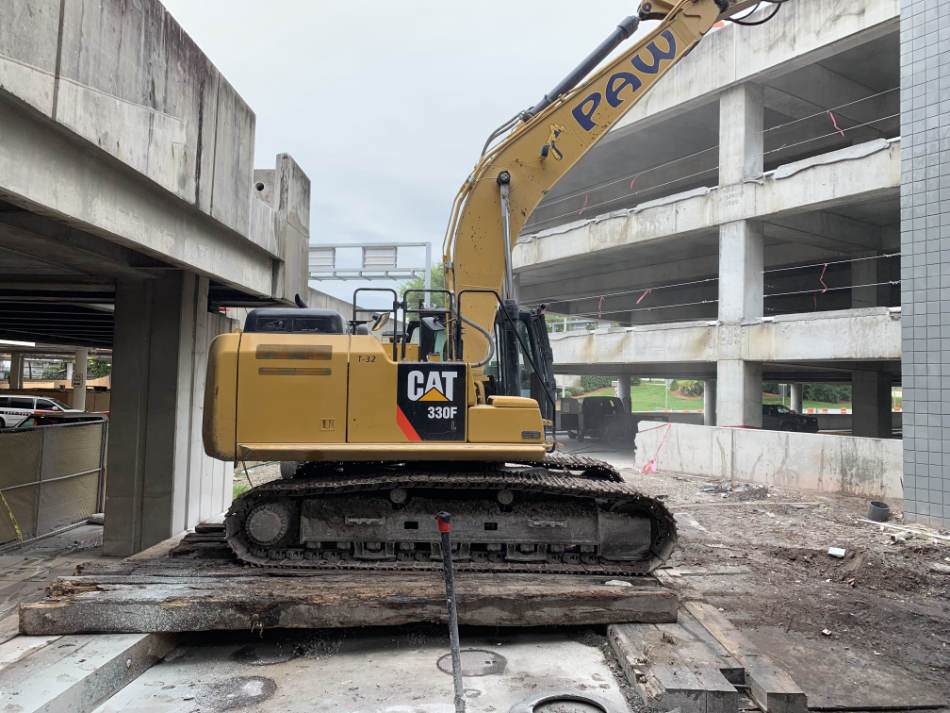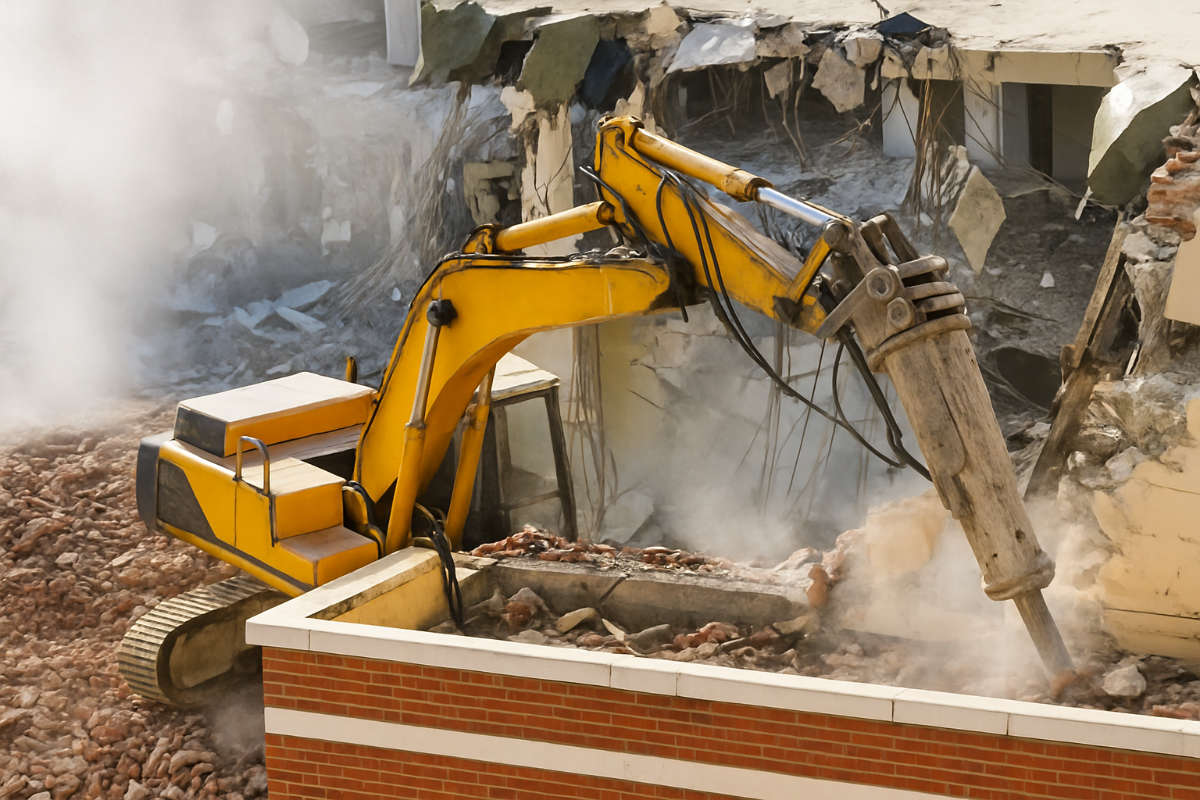Quick Answer:
Controlled demolition is a method of removing large buildings or structures by placing explosives at strategic support points so the structure collapses inward on itself. It is used to safely and efficiently take down skyscrapers, stadiums, bridges, and towers, especially in crowded urban areas where precision is essential.
What Is Controlled Demolition?
Controlled demolition is a specialized form of demolition engineering that uses blasting techniques to bring down a structure in a predetermined way. Instead of destroying a building with force, engineers carefully weaken its supports so gravity completes the collapse.
For comparison, other methods like building demolition in Tampa may rely on heavy machinery rather than explosives, making them more suitable for smaller or mid-sized projects.
Why is it called controlled?
Because every detail—placement, sequence, and timing of the charges—is calculated to control the collapse and protect surrounding buildings.
How Controlled Demolition Works
Engineering and Planning
How do engineers prepare a demolition?
Structural engineers review blueprints, load-bearing columns, and material strength to identify weak points. This process is similar to the planning involved in bridge demolition projects, where safety is a top concern.
Explosive Placement
Where are charges set?
Explosives are placed at critical structural joints, such as concrete columns and steel beams. The purpose is to weaken supports rather than “blow up” the building.
Timed Detonation
Why is timing important?
Explosives are fired in a precisely timed sequence, sometimes milliseconds apart. This sequencing ensures the structure folds inward (implosion) instead of toppling sideways.
Safety and Containment
How is safety maintained?
-
Remote detonation keeps crews at a safe distance
-
PPE safety procedures protect workers on-site
-
Vibration monitoring protects nearby buildings
-
Barriers and exclusion zones keep the public safe
Why Controlled Demolition Is Used
-
Safety: Removes dangerous structures while minimizing worker risk
-
Efficiency: A months-long manual process reduced to seconds
-
Precision: Allows demolitions in dense city environments
-
Versatility: Used for bridges, smokestacks, stadiums, towers, and high-rises
When is it the best choice?
It is preferred when a building is too large, unstable, or surrounded by other structures that need protection. In some cases, like commercial demolition projects in Tampa, explosives may be the most efficient option.
Controlled Demolition vs. Mechanical Demolition
| Feature | Controlled Demolition | Mechanical Demolition |
|---|---|---|
| Best for | Large, complex, urban structures | Small to medium buildings |
| Speed | Seconds (after setup) | Weeks to months |
| Safety | Remote detonation reduces worker risk | Workers operate close to debris |
| Cost | Higher upfront planning | Lower, but labor-intensive |
| Precision | Very high, collapse is contained | Moderate, more debris spread |
Real-World Examples
-
The Kingdome (Seattle, WA): Imploded in 2000 using 4,450 pounds of dynamite; collapsed in 16.8 seconds.
-
Mina Plaza (Abu Dhabi): Four unfinished towers demolished in 2020, earning a Guinness World Record as the tallest controlled demolition.
-
Hard Rock Hotel (New Orleans): Removed in 2019 after a partial structural collapse.
In Florida, projects like bridge and highway demolition have also used controlled methods when precision mattered most.
People Also Ask
Is controlled demolition safe?
Yes. When designed and carried out by experts, it is one of the safest demolition methods available.
How long does preparation take?
The actual implosion lasts seconds, but preparation—including surveys, drilling, wiring, and safety checks—may take weeks or months.
Can every building be demolished this way?
No. Smaller or less complex buildings are more cost-effective to remove with residential vs. industrial demolition methods like excavators or wrecking balls.
What’s the difference between demolition and implosion?
Implosion is a type of controlled demolition where explosives make a structure collapse inward, reducing debris spread.
How much does controlled demolition cost?
Costs vary widely but are generally higher than mechanical demolition due to planning, engineering, and safety measures.
What happens to the debris afterward?
Debris is sorted for recycling and landfill reduction, ensuring materials are reused when possible.
Can controlled demolition damage nearby buildings?
With vibration monitoring and safety barriers, the risk is minimal, though older or fragile nearby structures are assessed before detonation.

Fast, reliable demolition services from licensed pros with decades of field experience.
FAQ
Q: What is the main purpose of controlled demolition?
A: To safely remove large structures while minimizing risk to workers and surrounding buildings.
Q: What explosives are typically used?
A: Small amounts of dynamite or RDX-based charges, placed strategically in the structure.
Q: Who manages the demolition?
A: Licensed blasting professionals and structural engineers oversee the entire process.
Q: Do controlled demolitions cause earthquakes?
A: No. While they produce ground vibrations, they are far weaker than natural seismic events and are carefully monitored.
Q: Can controlled demolition be used on bridges?
A: Yes. Explosives can be placed on bridge supports and piers to ensure safe collapse into controlled zones.

